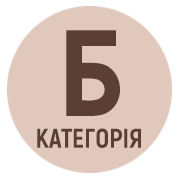UKRAINIAN-CHINESE INTERACTIONS IN CHORAL ART IN THE FIRST THIRD OF THE 20TH CENTURY
DOI:
https://doi.org/10.32782/2224-0926-2024-1-48-17Keywords:
choral art, conductor, creative work, culture, integration.Abstract
The article deals with the activity of the Ukrainian community and its leading choir conductor Stepan Kukuruza in the context of the influence of Western European culture on the formation and further development of Chinese choral art in the first third of the 20th century. The purpose of the article is to reconstruct the cultural life of Ukrainians in Harbin in the first third of the 20th century and the revival of contacts between China and Ukraine in the field of choral art beginning from the end of the 20th century. The scientific novelty of the study is related to the partial establishment of biographical facts and creative achievements of Kukuruza as a choir conductor, educator, social and public figure. Conclusions. Based on archival press materials and reports by A. Popkо, G. Karas, V. Chornomaz, it was found that in the first third of the 20th century the number of the Ukrainian community exceeded forty thousand people, and in the conditions of emigration, Ukrainians actively developed and promoted Ukrainian choral culture. It was established that Kukuruza founded the Ukrainian Club, the amateur choral group “Bandura” and the first Ukrainian theater where opera performances with choral numbers were systematically staged under his leadership (“Zaporozhets za Dunayem” (Zaporozhets Beyond the Danube) by S. Gulak-Artemovskyi and “May Night” by M. Lysenko); that Kukuruza was the compiler of the first reading books for Ukrainian schoolchildren, the editor of the “Zasiv” magazine, a member of the “Prosvita” society and the secretary of the Ukrainian consulate in Harbin; that among other Ukrainian artists in 1936, he was repatriated to the USSR, accused of espionage and executed. It is summarized that with his work Kukuruza most actively contributed to the continuation of the development of Ukrainian choral art on the territory of China and indirectly influenced the process of integration of choral singing into Chinese culture. The revival of contacts between China and Ukraine in the field of choral art from the end of the 20th century was studied. It has been proven that the development of executive cooperation in the field of popularization of works of Chinese choral music in Ukraine contributes to the deeper mutual enrichment of the musical cultures of China and Ukraine and the spiritual rapprochement of the two talented nations.
References
Карась Г. В. Музична культура української діаспори у світовому часопросторі ХХ століття: Монографія. Івано-Франківськ: Типовіт, 2013. 1164 с.
Китайські митці підтримують Україну. Громадській організації «Українська асоціація китаєзнавців» 20 років. 18 листопада 2023 р. URL: https://sinologist.com.ua.
Музична подорож до Китаю. Полтавський фаховий коледж мистецтв імені М.Лисенка URL: http://www.pmu.pl.ua/index.php/nov2/296
Попок А. Українське театральне та хорове мистецтво на Далекому Сході. Визвольний шлях. Лондон, 2001. Книга 7. С. 114–128.
Пронь С. Україна і Китай в системі міжнародних відносин: історія і сучасність. Політичні науки. Київ, 2006. 69 с.
Сун Жуй Лун. Українсько-китайські взаємини в контексті мистецького життя міста Харбін першої половини ХХ ст. Поліфонія діалогу в пост сучасній культурі: Збірник наукових праць. Київ: НАКККіМ, 2013. С. 359–366.
Трощинський В. Українці в Китаї. Вісник Української Всесвітньої Координаційної Ради. Київ: ТОВ Поліпром, 2004. № 2. С. 18–19.
Харбінський вісник. Орган Китайської Східної залізниці. Харбін, 1908. № 43. 24 с.
Чорномаз В. А. Маньджурський вісник. Харбін, 2018. Т. 19. URL: https://esu.com.ua/author?name







